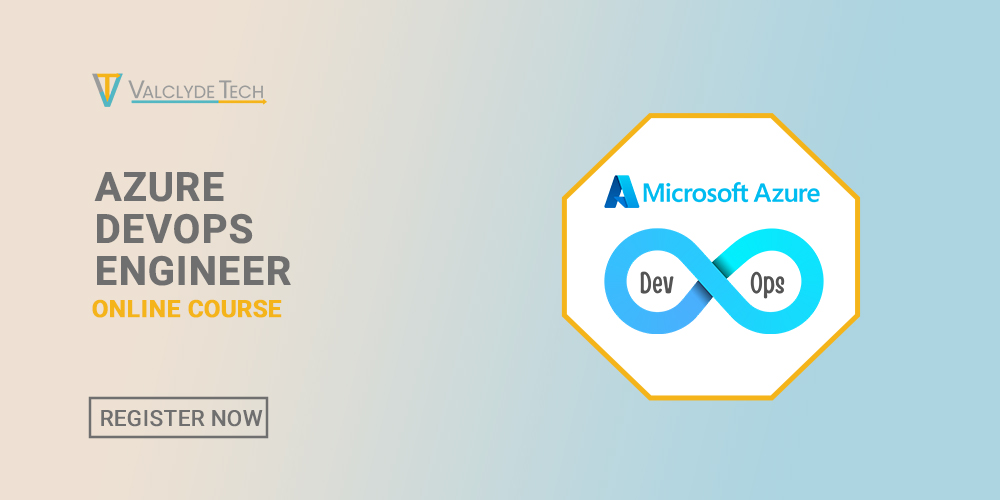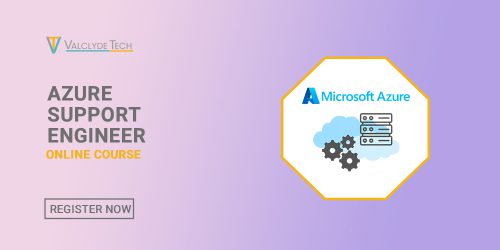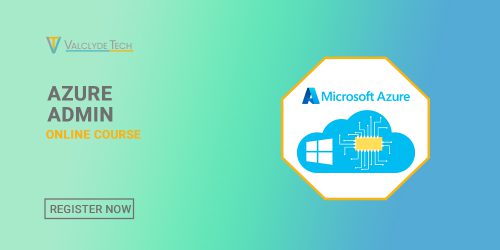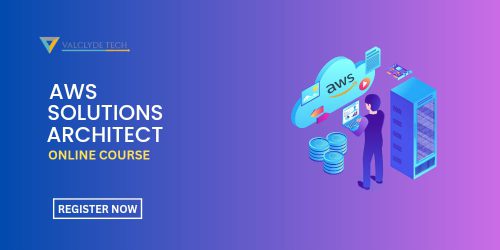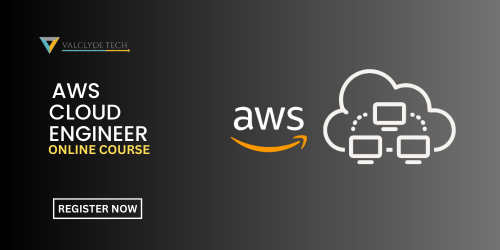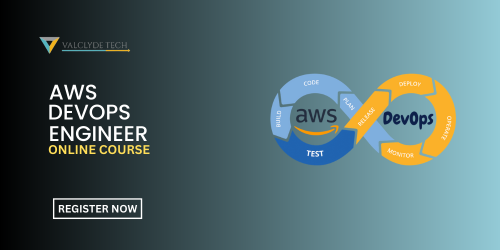Welcome to the Introduction to Azure course. This course will be a quick introduction to the foundational concepts that make Azure work, as well as cloud computing in general. This course is for the absolute beginner and will act as your “start here” location for kicking off a career in cloud computing and Microsoft Azure as Azure Admin, Azure DevOps Engineer or as Azure Support Engineer.
What you need to know?
Azure Fundamentals training goes step-by-step, and covers topics such as:
- Cloud concepts: benefits, economies of scale, Capex vs. OpEx, IaaS, PaaS, SaaS
- Cloud deployment models: public, private, hybrid
- Cloud cost control: purchasing options, cost factors, pricingcalculator, TCO, saving money.
- Customer support: service-level agreements, regions, geographies,zones, free Azure account, Azure portal
- Containers, microservices, and serverless computing
- Storage: overview, structured vs. unstructured data, storage tiersand encryption
- Networking: overview, load balancing, CDN, security groups,network access, Internet of Things (IoT)
Course Outline
MODULE 1 – DESCRIBE CLOUD COMPUTING.
- Define cloud computing (Microsoft Documentation: What is cloud computing? and Types of Cloud Computing)
- Describe the shared responsibility model (Microsoft Documentation: Shared Responsibility Model in Cloud)
- Define cloud models, including public, private, and hybrid (Microsoft Documentation: What is a Public Cloud?, What is a Private Cloud? and What is a Hybrid Cloud?)
- Identify appropriate use cases for each cloud model (Examples of cloud computing)
- Describe the consumption-based model (Microsoft Documentation: Consumption and Fixed Cost Models)
- Compare cloud pricing models (Microsoft Documentation: Azure Product Pricing and Azure Cloud Services pricing)
- Describe serverless.
DESCRIBE THE BENEFITS OF USING CLOUD SERVICES (BENEFITS OF CLOUD COMPUTING SERVICES).
- Describe the benefits of high availability and scalability in the cloud (Microsoft Documentation: Benefits and considerations of using cloud services)
- Describe the benefits of reliability and predictability in the cloud (Microsoft Documentation: Azure Reliability and Overview of the reliability pillar)
- Describe the benefits of security and governance in the cloud (Microsoft Documentation: Security governance and Governance in the Microsoft Cloud and Azure governance documentation)
- iv. Describe the benefits of manageability in the cloud (Microsoft
Documentation: Cloud management in the Cloud Adoption Framework, Cloud management gateway overview and Azure Management Guide, Before you start)
DESCRIBE CLOUD SERVICE TYPES:
- Describe infrastructure as a service (IaaS) (Microsoft Documentation: What is IaaS? and Azure IaaS (infrastructure as a service)
- Describe platform as a service (PaaS) (Microsoft Documentation: What is PaaS? and Use platform as a service (PaaS) options)
- Describe software as a service (SaaS) (Microsoft Documentation: What is SaaS? and About SaaS)
- Identify appropriate use cases for each cloud service (IaaS, PaaS, SaaS) (Microsoft Documentation: Azure Cloud Services)
MODULE 2 – DESCRIBE AZURE ARCHITECTURE AND SERVICES:
DESCRIBE THE CORE ARCHITECTURAL COMPONENTS OF AZURE:
- Describe Azure regional, regional pairs, and sovereign regions (Microsoft Documentation: Azure Regions and Availability Zones and Azure Regional Pairs and Azure Sovereign Clouds)
- Describe availability zones (Microsoft Documentation: Azure availability zones) iii. Describe Azure datacenters (Microsoft Documentation: Datacenter security overview)
- Describe Azure resources and resource groups (Manage Azure resource groups)
- Describe subscriptions (Microsoft Documentation: Subscription decision guide and Azure subscription)
- Describe management groups (Microsoft Documentation: Azure Management Groups)
- Describe the hierarchy of resource groups, subscriptions, and management groups (Microsoft Documentation: What are Azure management groups?
DESCRIBE AZURE COMPUTE AND NETWORKING SERVICES:
- Compare compute types, including container instances, virtual machines, and functions (Choose an Azure compute service, Azure Container
Instances, Introduction to Azure virtual machines, Introduction to Azure Functions) - Describe Virtual Machine options, including Azure Virtual Machines, Azure Virtual Machine Scale Sets, availability sets, and Azure Virtual Desktop (Virtual machines in Azure, What are virtual machine scale sets? and What is Azure Virtual Desktop?)
- Describe resources required for virtual machines (Windows virtual machines in Azure)
- Describe application hosting options, including Web Apps, containers, and virtual machines.
- Describe virtual networking, including the purpose of Azure Virtual Networks, Azure virtual subnets, peering, Azure DNS, Azure VPN Gateway, and Azure ExpressRoute (What is Azure Virtual Network?, Virtual Network Subnet, Azure Virtual Network Peering, Azure Peering Service Overview, What is Azure DNS?, What is Azure VPN Gateway?, Azure ExpressRoute and Significance of Azure ExpressRoute)
- Define public and private endpoints (What is a private endpoint?)
DESCRIBE AZURE STORAGE SERVICES:
- Compare Azure storage services (Introduction to Azure Storage)
- Describe storage tiers (Storage account overview, Hot, Cool, and Archive access tiers)
- Describe redundancy options (Azure Storage redundancy)
- Describe storage account options and storage types (Storage account overview)
- Identify options for moving files, including AzCopy, Azure Storage Explorer, and Azure File Sync (azcopy copy, Get started with AzCopy, Transfer data with AzCopy and file storage, What is Azure File Sync?, Get started with Storage Explorer)
- Describe migration options, including Azure Migrate and Azure Data Box (About Azure Migrate
DESCRIBE AZURE IDENTITY, ACCESS, AND SECURITY:
- Describe directory services in Azure, including Azure Active Directory (Azure AD) and part of Microsoft Entra and Azure Active Directory Domain Services (Azure AD DS)
- Describe authentication methods in Azure, including single sign-on (SSO), multifactor authentication (MFA), and passwordless (Passwordless authentication options for Azure Active Directory, authentication and verification methods are available in Azure Active Directory)
- Describe external identities in Azure, including business-to-business (B2B) and business-to-customer (B2C)
- Describe Conditional Access in Azure AD (What is Conditional Access?)
- Describe Azure role-based access control (RBAC) (What is Azure role-based access control (Azure RBAC)?)
- Describe the concept of Zero Trust (What is Zero Trust?) vii. Describe the purpose of the defense in-depth model.
- Describe the purpose of Microsoft Defender for Cloud (What is Microsoft Defender for Cloud?
DESCRIBE COST MANAGEMENT IN AZURE:
- Describe factors that can affect costs in Azure (Plan and manage your Azure costs)
- Compare the Pricing calculator and the Total Cost of Ownership (TCO) calculator (Total Cost of Ownership (TCO) Calculator)
- Describe the Cost Management capabilities in Azure.
- Describe the purpose of tags (Use tags to organize your Azure resources andmanagement hierarchy)
DESCRIBE FEATURES AND TOOLS IN AZURE FOR GOVERNANCE AND COMPLIANCE:
- Describe the purpose of Microsoft Purview in Azure
- Describe the purpose of Azure Policy (What is Azure Policy?)
- Describe the purpose of resource locks (Lock resources to prevent unexpected changes)
DESCRIBE FEATURES AND TOOLS FOR MANAGING AND DEPLOYING AZURE RESOURCES:
- Describe the Azure portal (Azure portal overview)
- Describe Azure Cloud Shell, including Azure Command-Line Interface (CLI) and Azure PowerShell (Overview of Azure Cloud Shell)
- Describe the purpose of Azure Arc (Azure Arc overview)
- Describe infrastructure as code (IaC) (IaC on Azure)
- Describe Azure Resource Manager (ARM) and ARM templates (What is Azure Resource Manager?, What are ARM templates?)
DESCRIBE MONITORING TOOLS IN AZURE:
- Describe the purpose of Azure Advisor (Introduction to Azure Advisor)
- Describe Azure Service Health (What is Azure Service Health?)
- Describe Azure Monitor, including Log Analytics, Azure Monitor alerts, and Application Insights (Log Analytics tutorial, Azure Monitor
overview, Application Insights overview)
Course Features
- Lectures 0
- Quizzes 0
- Duration 50 hours
- Skill level All levels
- Language English
- Students 1
- Assessments Yes

